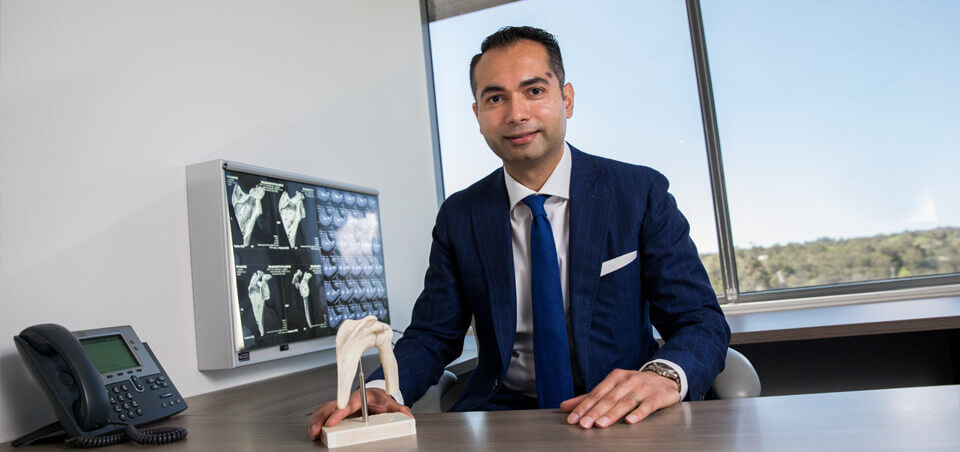Subacromial Impingement, Subacromial Bursitis and Rotator Cuff Insertional Tendinitis
Knowledge that empowers
What is it?
The shoulder is a ball and socket joint. The acromion is part of the shoulder blade that forms the roof of the shoulder.
The subacromial space is the space that lies between the top of the ball and the underside of the acromion. A number of structures lie within the subacromial space:
- The rotator cuff tendons connect the rotator cuff muscles to the humerus (ball part of the joint).
- The bursa is a fluid filled sac that lies on top of the tendons. Its role is to reduce friction on the tendons from the bones and ligaments that lie above them.
Subacromial impingement, subacromial pain syndrome and rotator cuff related pain all terms used to refer to the same problem. Pain can occur due to:
- Intrinsic tendon degeneration causing a painful tendon and weakness of the tendon structure. Sometimes this might progress to small tendon tears.
- ‘Impingement’ of the bursa and tendons on the underneath surface of the acromion, or sometimes a bony spur on the acromion). The acromion has morphological variants. A person with a curved or hooked acromion would be at a higher risk of impingement due to the narrowing of the acromiohumeral gap and bursal space.
- Primary inflammation of the bursa as can occur in conditions such as rheumatoid arthritis.
- Other indirect causes: Glenohumeral instability, Labral tears, SLAP tears, abnormal muscle pattern problems like scapula dyskinesis.
The bursa can also become thickened, however this can be a normal adaptation in some people as a result of regular overhead work or sports.
Research has identified that many people without pain have tendon and bursa changes on ultrasound scan. It is unclear why some people experience pain while others do not.

Who is affected?
Often pain is associated with a change in activity for example after completing a DIY project or taking up a new sport. It increases the risk of developing subacromial impingement with age, although anyone can be affected.
What are the symptoms?
Shoulder pain often starts off as mild but may become more painful overtime. It is not always the result of an injury however a minor injury may be associated with the onset of symptoms. Pain is often felt on the anterolateral part of the shoulder and shoots down to the upper arm particularly when reaching out to the side or out in front. The shoulder can be painful to lie on and turn over in the night.
How is the diagnosis made?
A diagnosis is made by listening to the information you give related to the onset of pain. An examination will be performed.
An X-ray and ultrasound scan may be ordered to see if there are any bony spurs, and to exclude other causes of your symptoms. An MRI is the most accurate test to reveal underlying rotator cuff tendon pathology.
What is the prognosis?
Subacromial pain without underlying major pathology often responds well to a course of physiotherapy for 6-12 weeks, and occasionally a corticosteroid injection to help with pain. It may be necessary to reduce the aggravating activities for a period of time before building back up.
Non surgical treatment
Medication
Initially a reduction in the aggravating activity may be required. Your doctor may prescribe medication to help reduce your pain.
Physiotherapy
A course of physiotherapy for 6-12 weeks will aim to restore movement, strength and function in your shoulder and address any contribution factors. The key points to work on are good posture, shoulder blade positioning and strengthening of the weakened rotator cuff muscles.
Corticosteroid injection
If the pain hasn’t reduced to a satisfactory level despite physiotherapy a corticosteroid injection (anti-inflammatory) into the subacromial space may be considered. This can be effective in reducing pain, however it is important to avoid heavy or sudden activities involving the shoulder for 1-2 weeks following the injection, and continue working with your physiotherapist on factors that may prevent the pain returning.
Surgical treatment
If, despite a course of 6 months of good physiotherapy and/or a steroid injection your symptoms have not satisfactorily reduced a subacromial decompression may be considered.
Keyhole incisions are made and any bony spurs identified under the acromion are trimmed away (subacromial decompression).
The goal is to increase the amount of space between the acromion and the rotator cuff tendons, which will then allow for easier movement and less pain and inflammation. The thickened/inflamed bursa is also removed. A sling is worn for a few days for comfort before you commence a graduated physiotherapy programme designed to restore movement, strength and function. You may need a period of time away from work or sport depending on your job or sport type.
